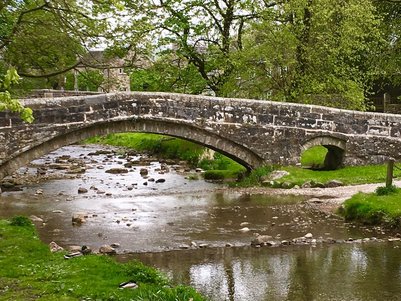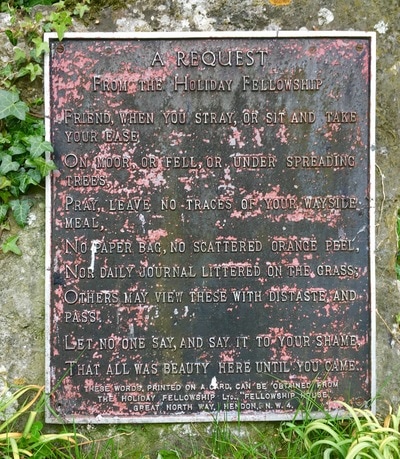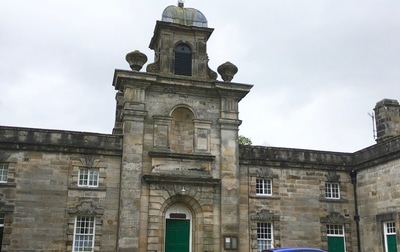
There's a sundial monument in Linton that proudly declares it to be (in 1949) the loveliest village in the North of England. That's still true today, although I might be tempted to scribble out the "the North of" bit... I can well imagine the sense of tranquility the judges of this award must have felt when they visited, especially after the horrors of the war. Nowadays it's a wonderful place to go when you want to retreat from the busy world.
If you have any recalcitrant children with you, you might want to set them the task of seeing how many ways there are to cross the river Wharfe and Linton Beck. Within the little hamlet, you'll immediately spot the beautiful green, flanked on one side by the Fountaine Inn and on the other the beck.
There are three bridges, including an ancient clapper bridge and the 14th century humpback bridge known as "Little Emily's Bridge". Close to the clapper bridge you'll see a building in a combination of Palladian and Georgian styles that seems a little grand for a Dales hamlet. It's known as the Fountaine Hospital after its founder Richard Fountaine of Linton who made his fortune and then left money in his will to built the almshouses and chapel in 1721. The building is still in use and you can slip in and see the tiny chapel during daylight hours. The other cottages feel more agricultural and in keeping with the scale of the village, where flax was an important crop.
From here it's worth following signs to the 12th century Linton Church next to which you'll see the stepping stones. Linton Beck runs down to the River Wharfe at the limestone Linton Falls, where there's another bridge for the footpath up to Grassington.
When you've finished exploring Linton you can enjoy a fantastic meal at the very cosy and picturesque Fountaine Inn or walk up to Grassington.
If you have any recalcitrant children with you, you might want to set them the task of seeing how many ways there are to cross the river Wharfe and Linton Beck. Within the little hamlet, you'll immediately spot the beautiful green, flanked on one side by the Fountaine Inn and on the other the beck.
There are three bridges, including an ancient clapper bridge and the 14th century humpback bridge known as "Little Emily's Bridge". Close to the clapper bridge you'll see a building in a combination of Palladian and Georgian styles that seems a little grand for a Dales hamlet. It's known as the Fountaine Hospital after its founder Richard Fountaine of Linton who made his fortune and then left money in his will to built the almshouses and chapel in 1721. The building is still in use and you can slip in and see the tiny chapel during daylight hours. The other cottages feel more agricultural and in keeping with the scale of the village, where flax was an important crop.
From here it's worth following signs to the 12th century Linton Church next to which you'll see the stepping stones. Linton Beck runs down to the River Wharfe at the limestone Linton Falls, where there's another bridge for the footpath up to Grassington.
When you've finished exploring Linton you can enjoy a fantastic meal at the very cosy and picturesque Fountaine Inn or walk up to Grassington.
















